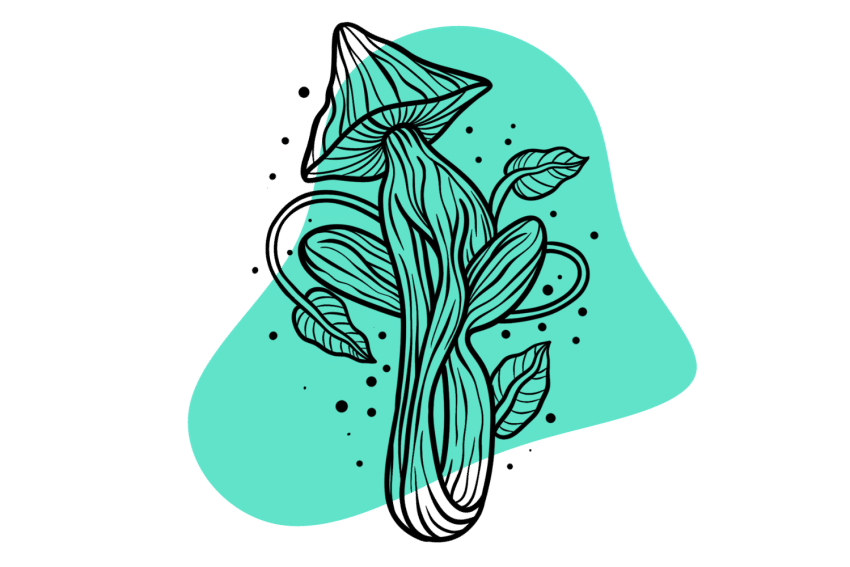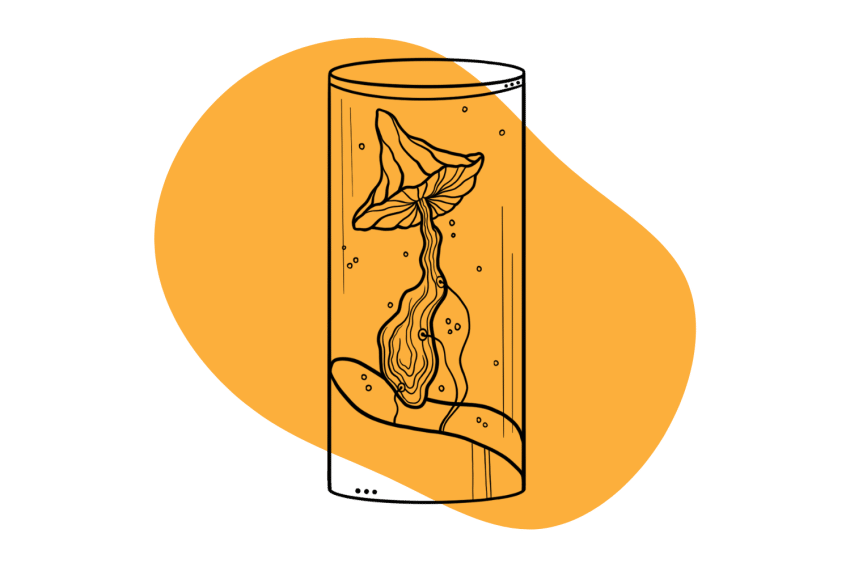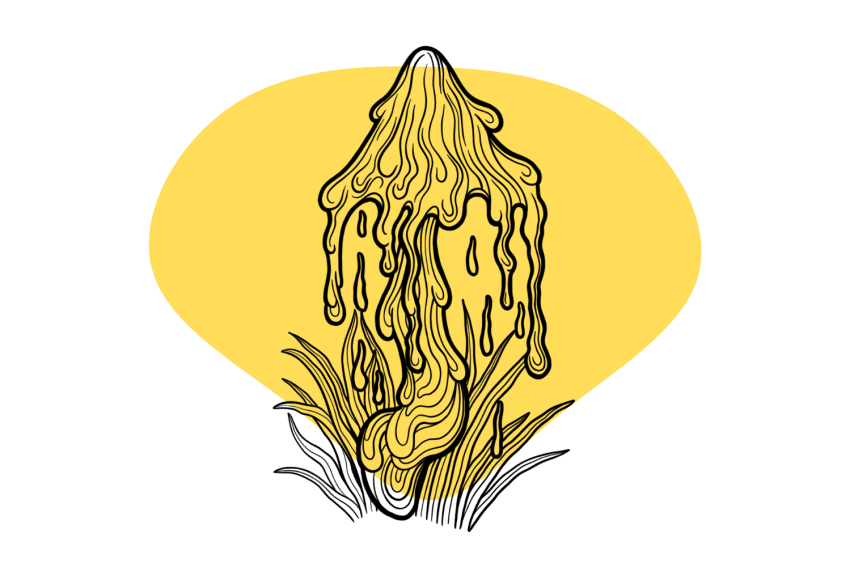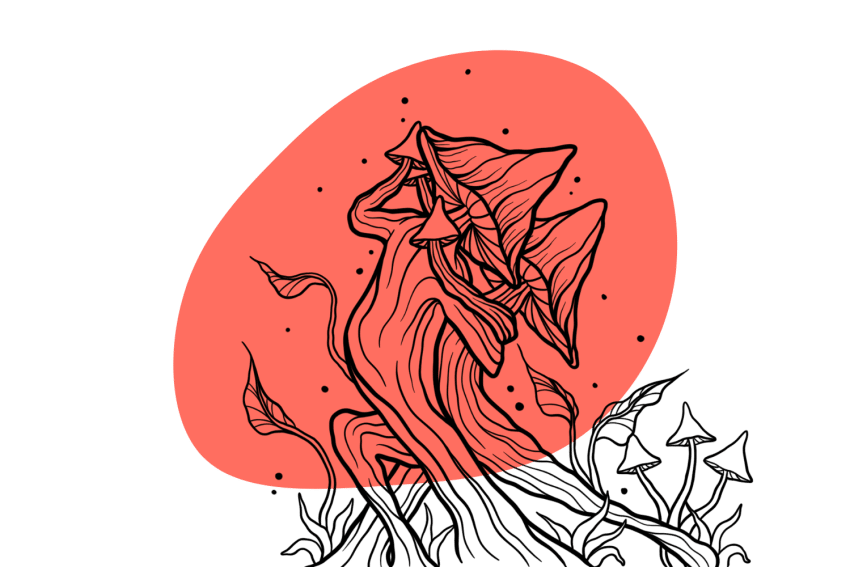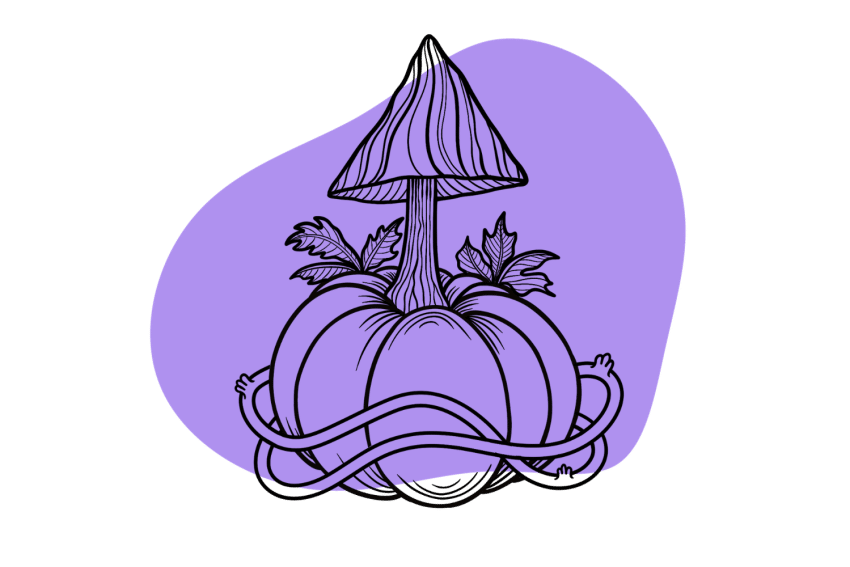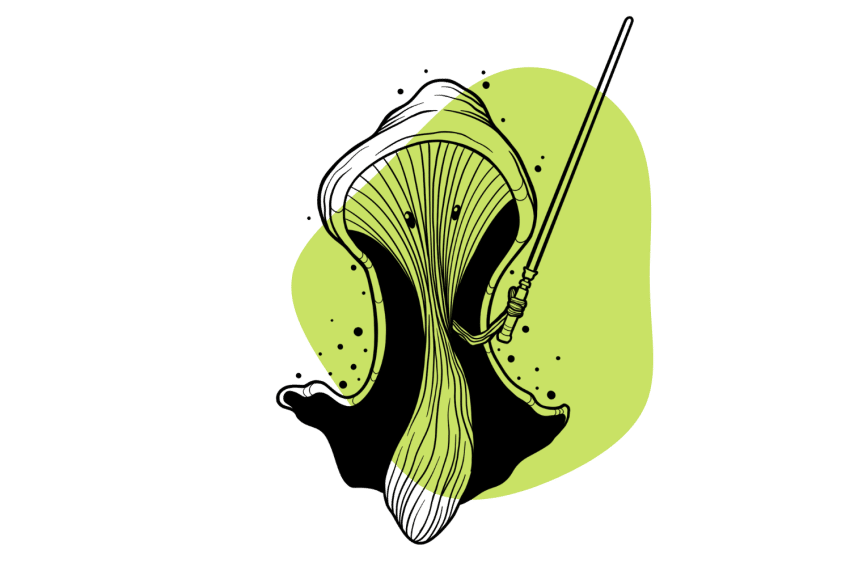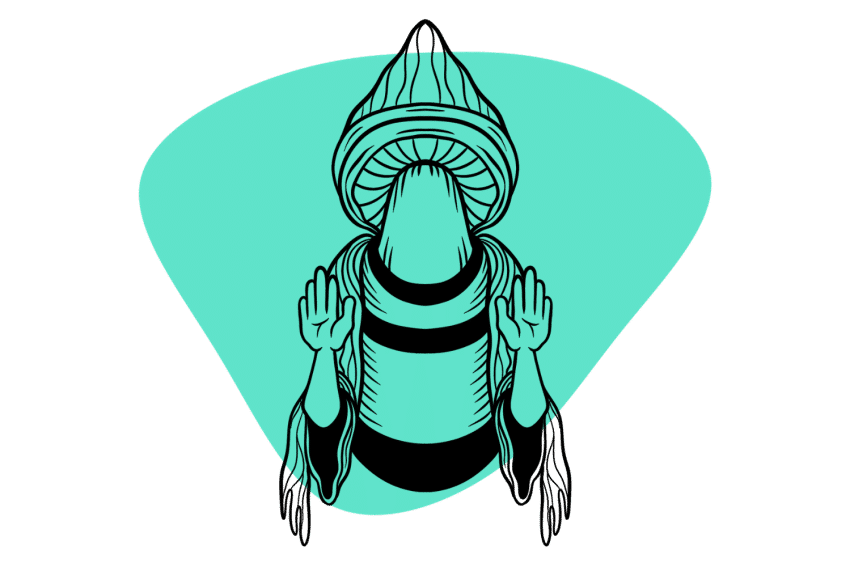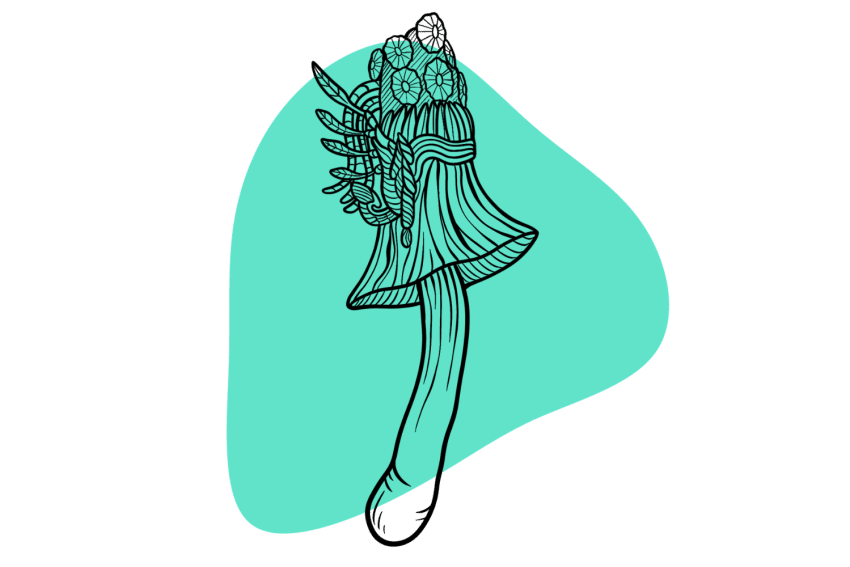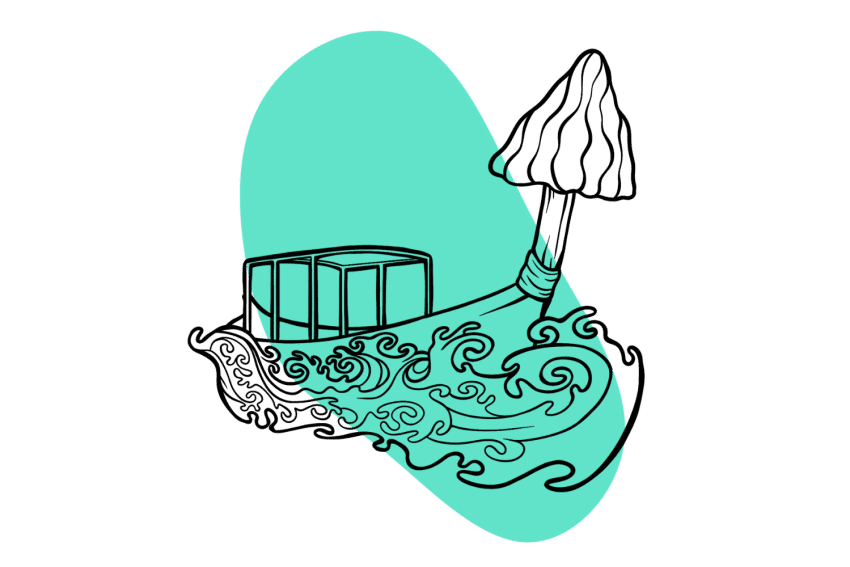Malaysian Strain: A Rare & Mysterious Psilocybe cubensis Strain
Unlike most other Southeast Asian strains, Malaysian shrooms are notoriously unstable.
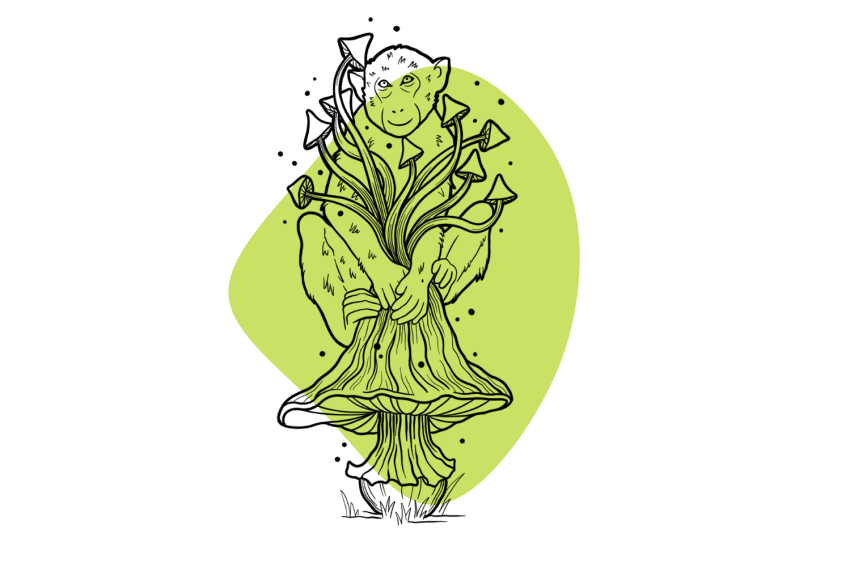
Malaysian shrooms have wavy cream-white stems with rounded golden brown caps. They often produce white spots over the caps that give them an almost toadstool-like appearance, but these fade as the mushrooms mature.
The veils hide the gills of these mushrooms until the very last minute. This gives the caps a dome-like look that makes them seem almost alien.
The potency is roughly average compared to other Psilocybe cubensis strains.
With that said, the Malaysia strain often breaks its own rules. Large flat caps, changes in pigmentation, and even albino shrooms have been produced from a single genetic sample. It’s also entirely possible to get shrooms that are underpowered and others that seem to knock your head off with just a few grams (though this is more rare than samples that are… disappointing).
Don’t worry if the shrooms that pop up don’t look as expected; that’s just part of the exciting nature of this strain.
Malaysian Strain Specs
| Potency | Average 🍄 |
| Cultivation | Intermediate |
| Species | Psilocybe cubensis |
| Substrate Recommendation | Rye Grain, BRF, Coco Coir & Vermiculite |
| Sold By | Spores 101 (🇺🇸/🇨🇦), Miracle Farms (🇺🇸/🇨🇦), Sporeslab (🇨🇦), The Magic Mushrooms Shop (🇪🇺) |
History of the Malaysian Strain
MJshroomer, a mycologist on the Shroomery Forum, was allegedly the first to collect and domesticate the Malaysian strain. When this happened remains a mystery, and not much is known about its history and origins.
This strain is relatively rare and mysterious; even now, the spores can be difficult to find.
Malaysia has some crazy drug laws and even enforces the death penalty for drug trafficking. Because of this, there’s little information about cultural psychedelic use. For now, the Malaysian strain’s history and origins start and end with its discovery and introduction to the western world.
Malaysian Strain Potency & Psilocybin Content
We’ve found this mushroom to be very inconsistent, which makes it hard to pass any hard judgment in terms of potency.
We’ve had samples that were stronger than average and a few that were below average. But most of the time, you can expect these mushrooms to be on par with most Psilocybe cubensis strains (think, Golden Teacher, Koh Samui, or B+).
There isn’t much analytical data on this strain, but what’s available so far supports the idea that this is an average potency strain.
In the Spring 2022 Psilocybin Cup, a sample of the Malaysian strain was submitted for testing. The psilocybin and psilocin content of this sample was 0.81% and 0.03%, respectively. The total tryptamine content (psilocybin, psilocin, baeocystin, and related tryptamines combined) was 0.85% total.
For reference, we consider the average tryptamine range for magic mushrooms of this species to be between 0.5% and 0.9%.
In terms of effects, the Malaysian strain tends to produce feelings of stimulation and euphoria starting around 30 minutes after taking them. The user often experiences butterflies and feelings of excitement, and the world around them “seems a little brighter and clearer.”
As the mushrooms work their way through the digestive tract, the visual enhancement grows before hallucinations such as blurred lines, visual sound lines, and geometric patterns appear. Malaysian is said to be a good social shroom, allowing you to build strong bonds and connections when taking it with friends.
The usual psychedelic dose for a Psilocybe cubensis strain of this strength sits around the two- to three-gram mark.
Where to Buy Malaysian Spores
Malaysian isn’t a particularly popular or common strain. Genetic samples are definitely hard to come by. So far, we’ve only found reliable vendors that sell Malaysian spores in the United States.
Other vendors appear to ship to Canada and Europe, but they don’t have much of a reputation.
If you’re lucky enough to live in the United States, you’ll be able to purchase Malaysian genetics in the form of spore prints and sterile spore syringes. Ralphsters Spores is the best vendor to source these spores from. Ralphsters have been around for decades and are extremely reliable.
Here’s some other great vendors to try as well:
- If you live in the United States — MYYCO, Spores 101, Miracle Farms
- If you live in Canada — Spores 101, Sporeslab, Planet Spores
- If you live in Europe — The Magic Mushrooms Shop (🇪🇺), Shiny Spores (🇬🇧)
→ View all spore vendors & grow kit suppliers
How to Grow Malaysian Mushrooms
Although Malaysian spores can be hard to come by, they aren’t particularly hard to cultivate when you do get your hands on some. This unstable strain is likely to mutate, but it’s pretty contamination-resistant. You can get successful results even with limited knowledge and equipment.
Temperature and sterile practice are the two most important factors to get right when attempting to cultivate Malaysian. You should see good results if you keep everything as sterile as possible during the inoculation and incubation phases and keep the temperature stable during fruiting.
Malaysian mycelium cakes should be in an environment of between 73 and 82 degrees Fahrenheit (23 and 28 degrees Celsius). Use a spray bottle filled with water to keep the humidity around them as high as possible.
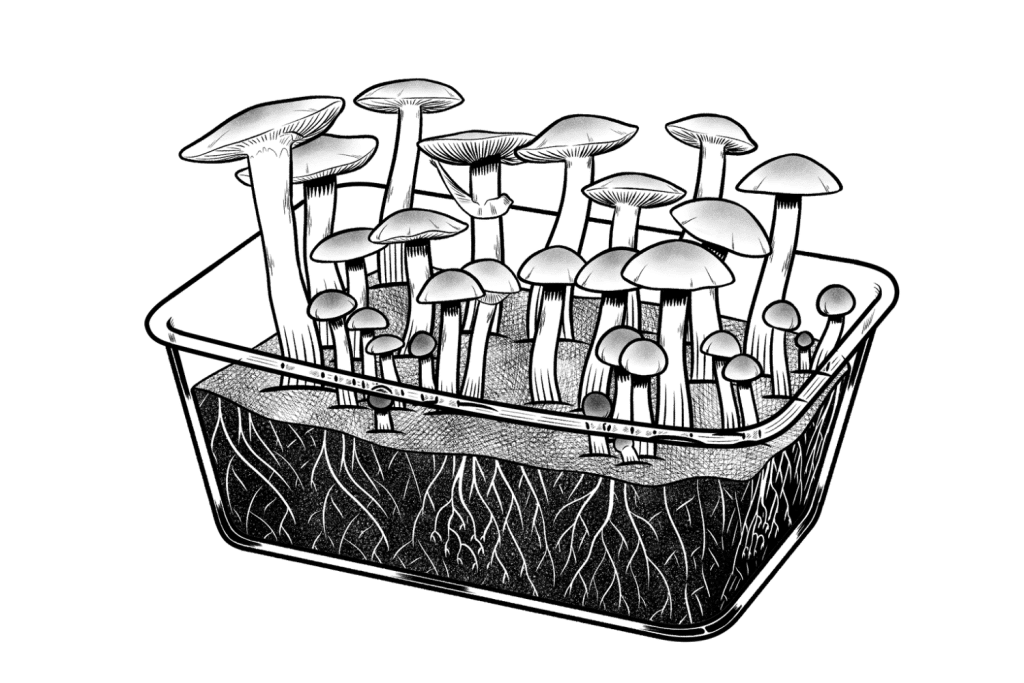
The easiest way to grow the Malaysian strain is using a method called PF-Tek. You can find out exactly how to grow magic mushrooms using this technique by reading our in-depth cultivation guide here. For now, I’ll give you a brief rundown so you know what to expect.
You start by sterilizing some simple glass jars filled with growing substrate. Malaysian is best grown on rye grain or BRF (brown rice flour) cakes, but it will do well on most substrates. The sterile substrate-filled jars are then inoculated using spore syringes.
Seal the inoculated jars and leave them in a dark place until mycelium completely colonizes the substrate. Once the mycelium cakes are fully established, remove them and place them in a simple fruiting chamber.
A fruiting chamber is essentially a box with holes drilled inside it for ventilation. It acts as a sort of propagator that provides ample humidity and temperature for mushroom growth. A heating pad can help control the temperature inside the chamber. The mushrooms will start to appear surprisingly quickly once the cakes enter the fruiting chamber.
Pick the mushrooms carefully as they mature — but before they drop spores. Mushrooms will grow sporadically until the colony eventually succumbs to contamination and mold starts to form.
Other Strains With Intriguing Growth Habits
Malaysian is an intriguing strain because it has some peculiar growth habits. This strain could be a good option if you’re looking for an interesting P. cubensis strain to grow that’s a little different from the norm.
Malaysian isn’t the only exciting and unusual strain out there. Here are a few strange strains for you to check out:
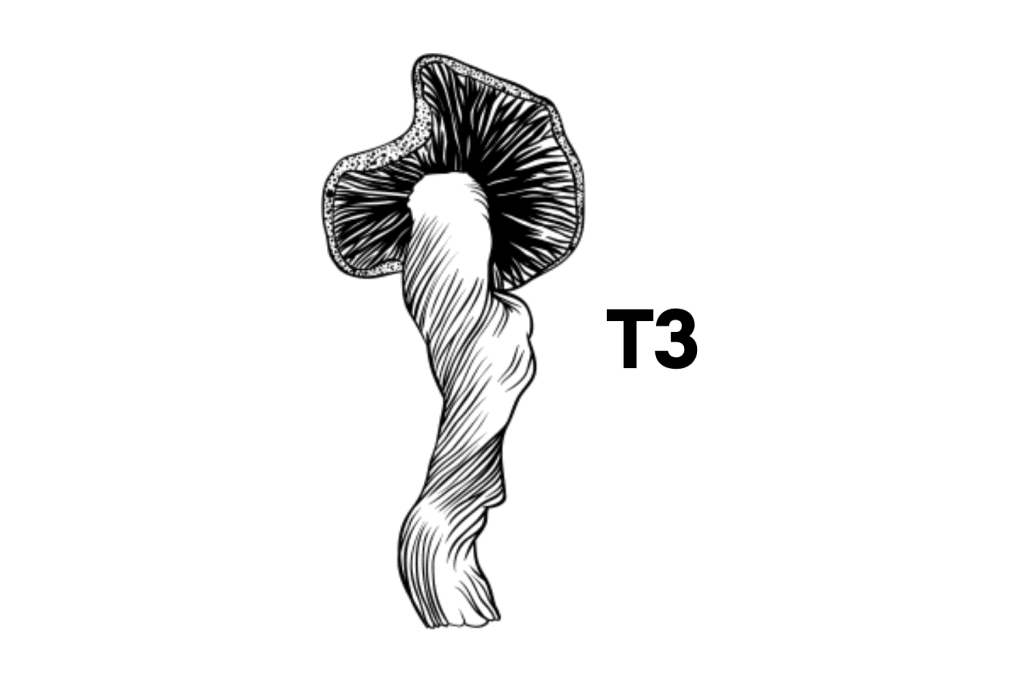
T3
T3 is a curious strain that gets its name from the three distinctly different growth characteristics it produces. The mushrooms that grow in each flush of the fruiting phase seem to change significantly every time. This strain was found somewhere in Thailand and may have been discovered by “Mushroom” John Allen.
Genetically, T3 is similar to Koh Samui, but instead of producing consistent “Fatasses,” it makes several different-looking shrooms.
This isn’t for commercial growers or people looking for a stable set of genetics to produce constant yields. However, for those in search of something exciting and unique, it’s perfect.

Enigma (ENIG)
Enigma is unlike any other strain of Psilocybe cubensis on the planet. Instead of your typical “mushroom-shaped” mushroom, Enigma produces thick ruffles of coral-like growth. Although these fruiting bodies look like large truffles or pieces of dried coral, they are actually above-ground fruiting bodies — mushrooms.
If you’re looking for something different, you can’t get much better than Enigma. This strain is not only incredibly unusual, but it’s also extremely potent. Enigma won the Recreational Champion title in the Fall 2021 Oakland Hyphae Psilocybin Cup with multiple samples producing over 1.80 milligrams per gram of dried shrooms.
This isn’t a strain for the person who wants a quick and easy turnaround. It’s relatively easy to grow, but the truffle-like masses of psilocybin-containing fungi can take over four months to produce. The longer you leave the fruiting bodies to grow, the more potent they become.
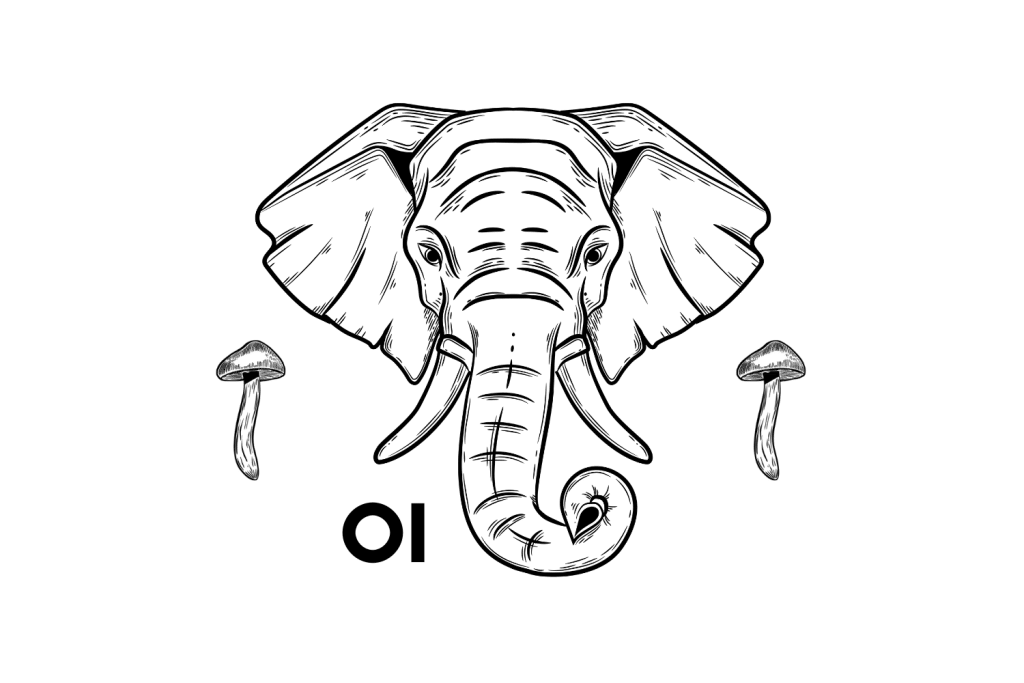
Orissa India (OI)
Orissa India is an interesting strain that was found growing in cow dung near a temple in Orissa, India. It’s extremely potent compared to other Psilocybe cubensis strains. However, it’s not the staggering potency that makes this shroom intriguing.
Orissa, India, once held the record for the largest ever cultivated P. cubensis mushroom. Although the title now goes to a South American Cubensis sample of astonishing size, these fruiting bodies are still impressive.
If you’re looking for an interesting strain, why not give Orissa India a go to try and break the record?
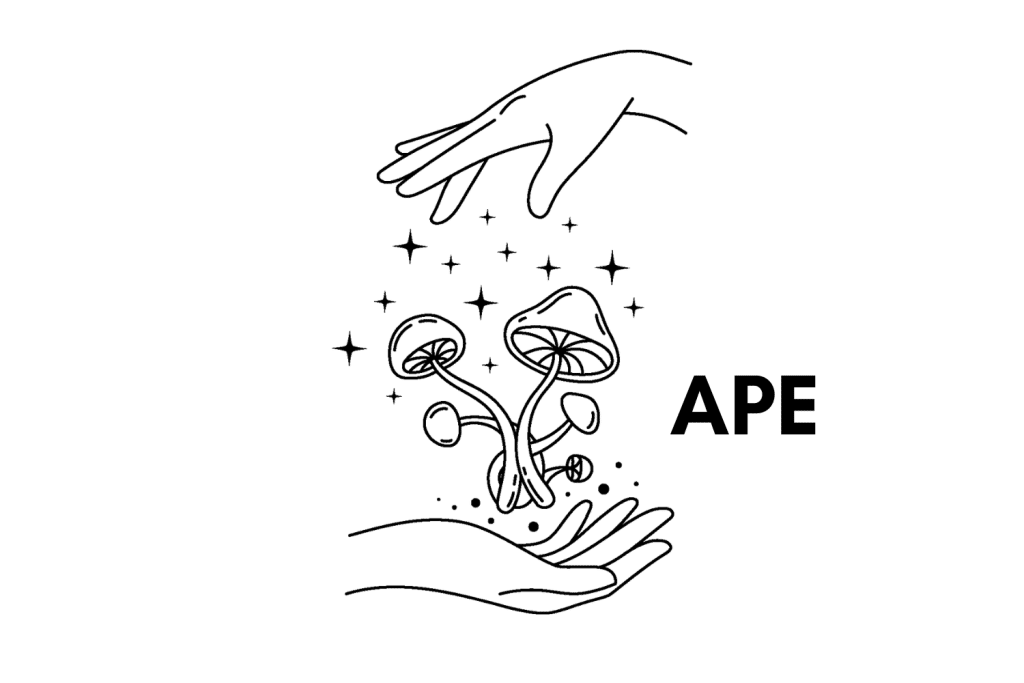
Albino Penis Envy (APE)
Albino Penis Envy is a non-pigmented version of the famous Penis Envy strain. Albino Penis Envy carries the notorious potency of the original strain, but it produces pure white fruiting bodies. It was developed by the team that runs the Sporeworks spore vendor.
It’s a relatively easy strain to grow but is far more prone to aborts than the pigmented original. We don’t recommend it for beginner cultivators, nor is it advisable for first-time trippers to consume.
Strains vs. Species: What’s the Difference?
There are hundreds of different species of magic mushrooms. Within these species exist hundreds of genetically distinct strains.
So what, exactly, is the difference between a species and a strain?
- Species — A species is a group of organisms with the same biological and genetic makeup. A single species will have defining characteristics that separate them from others within a kingdom (plants, animals, fungi, etc.).
- Strain — A strain is a genetic variant within a single species. One strain may look different from another in the same species, but genetically they are similar. There can be hundreds or thousands of different strains under a single species — take Psilocybe cubensis, for example.
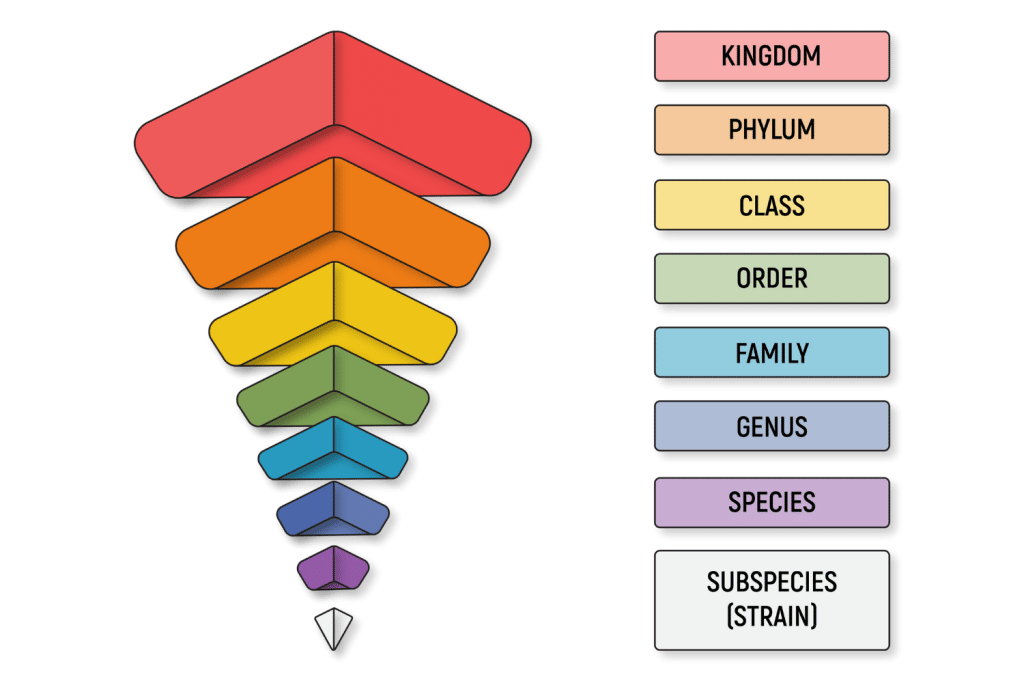
It’s not just mushrooms that have hundreds of strains under a single species. You just have to look at the plant kingdom to see this. Cannabis sativa has almost one thousand different genetic variants (strains), such as kush, cheese, and haze.
Species that have had some kind of human intervention usually have far more strains within them. We like to “mess” with nature to produce strains with different qualities. We crossbreed cannabis and cross-cultivate magic mushrooms to create strains with different potencies, yields, and growth characteristics.

